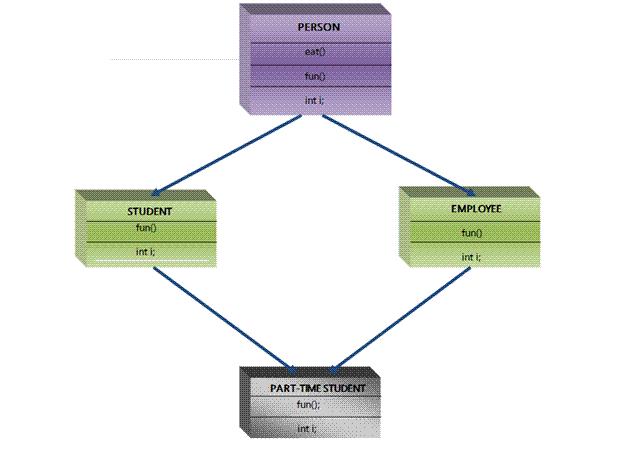CSC/ECE 517 Fall 2007/wiki1 7 c9
Concept to explore
Multiple inheritance is a controversial concept. Detractors say it leads to messy class hierarchies, it is impossible to implement efficiently, and when the same method is inherited along two different paths, there is no good way to decide automatically which definition should be used. Do mixins solve all of these problems? Give (or cite) examples (e.g., Java, C++, and/or Ruby) to illustrate your conclusions. Are mixins a clear advance over interfaces? Do mixins have any disadvantages not shared by multiple inheritance or interfaces?
Real World Problem
Let us see a real world example and see often why some sort of of multiple inheritance is required. Then see in phases how each language C++, Java, Ruby deals this problem.
Consider a part-time student this means that he is both a student as well as an employee(typically). But in first place he is a also person. So, he will have attributes and states of both a student and also of an employee. Since these two classifications first belong to the classification person, part-time student also gets any attributes from the person as well. Lets consider some essential features of a person he eats, he will have fun and also say he has some attribute 'i' to say about his state.
Now, the fun a student will have will be different from an employee, so we should distinguish that and also the state. So we need some sort of specialization. Now the fun a part time student(if any!) might change. This is the crux of the problem all the languages have attempted to solve and each of them have used a different strategy.

In object oriented terms, we can say that part-time student class inherits both from the student as well the employee. Both student and employee inherit from the class person. The person will have methods eat(),fun() and int i (this is represent the state). Student class will derive the state and method fun from person. The same is with employee. Note that here the fun method implementation is different in these classes. And part-time student will get both the derived class fun and the state.
References:
- Programming Ruby: The programmatic programmer’s guide
- Deadly diamond of death by Robert Martin
- A very insightful article from thoughtbot
- Wiki entry on Ruby
- The C++ code snipped has been adapted from this site